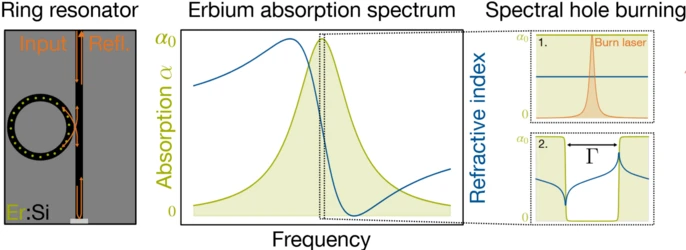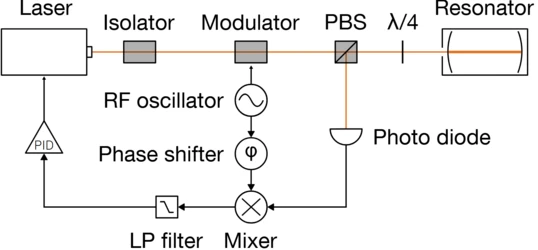Ultra-stable lasers are a key component in many scientific endeavors in both applied and fundamental physics. Their frequency stability is an essential prerequisite for high-fidelity operations in optically controlled qubits, which makes them a key component of optical atomic clocks [1] and allows for precision tests of the foundations of physics. To this end, lasers are actively stabilized to external optical references, such as resonators with high quality factors, as shown in Fig. 1. State-of-the-art systems typically use macroscopic Fabry-Pérot cavities under optimized laboratory conditions [2], which require precise control of external parameters like temperature, pressure, and vibrations. However, many applications require ultra-stable lasers outside of laboratory conditions, e.g., field-employable quantum network nodes, transportable atomic clocks, and space-based global navigation systems (GPS, Galileo).

To implement and improve such systems, we explore novel types of frequency references for laser stabilization that are compatible with field conditions. In a first approach, we use optical resonators formed by optical fibers under cryogenic conditions. A proof-of-concept experiment of our group [3] has revealed an exceptionally low sensitivity to vibrations as well as temperature and pressure variations, making it very promising for precision experiments. Currently, we implement resonators with reduced linewidth based on fiber Bragg gratings (see Fig. 2) to experimentally test the ultimate limits of this approach.
Our second approach is based on the inherent frequency stability of erbium dopants under optimized conditions. In particular, we focus on a nanophotonic approach, in which dopant ensembles are embedded into on-chip silicon resonators. As shown in Fig. 3, by tailoring the optical absorption of the dopants, the group velocity of light can be reduced by many orders of magnitude. This reduces the resonator linewidth and can thus improve the precision of laser stabilization [4]. This makes our chip-based approach an interesting candidate for highly compact and stable frequency references.

[1] D. Ludlow et al., Optical atomic clocks, Rev. Mod. Phys. 87, 637
[2] D. G. Matei et al., 1.5μm Lasers with Sub-10 mHz Linewidth, Phys. Rev. Lett. 118, 263202
[3] B. Merkel et al., Laser stabilization to a cryogenic fiber ring resonator, Opt. Lett. 46, 444-447
[4] S. Horvath et al., Slow light frequency reference cavities—proof of concept for reducing the frequency sensitivity due to length fluctuations, New J. Phys. 24 033034
